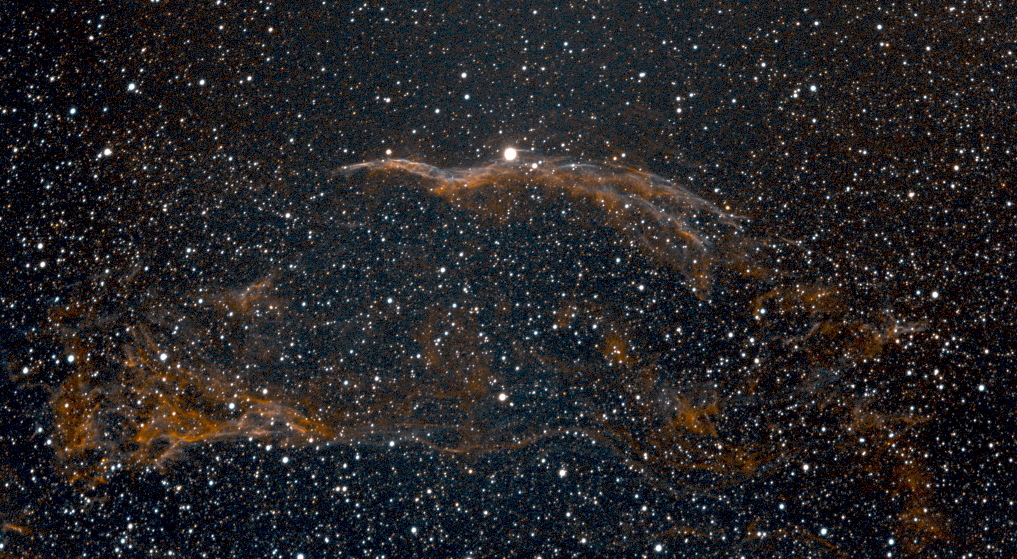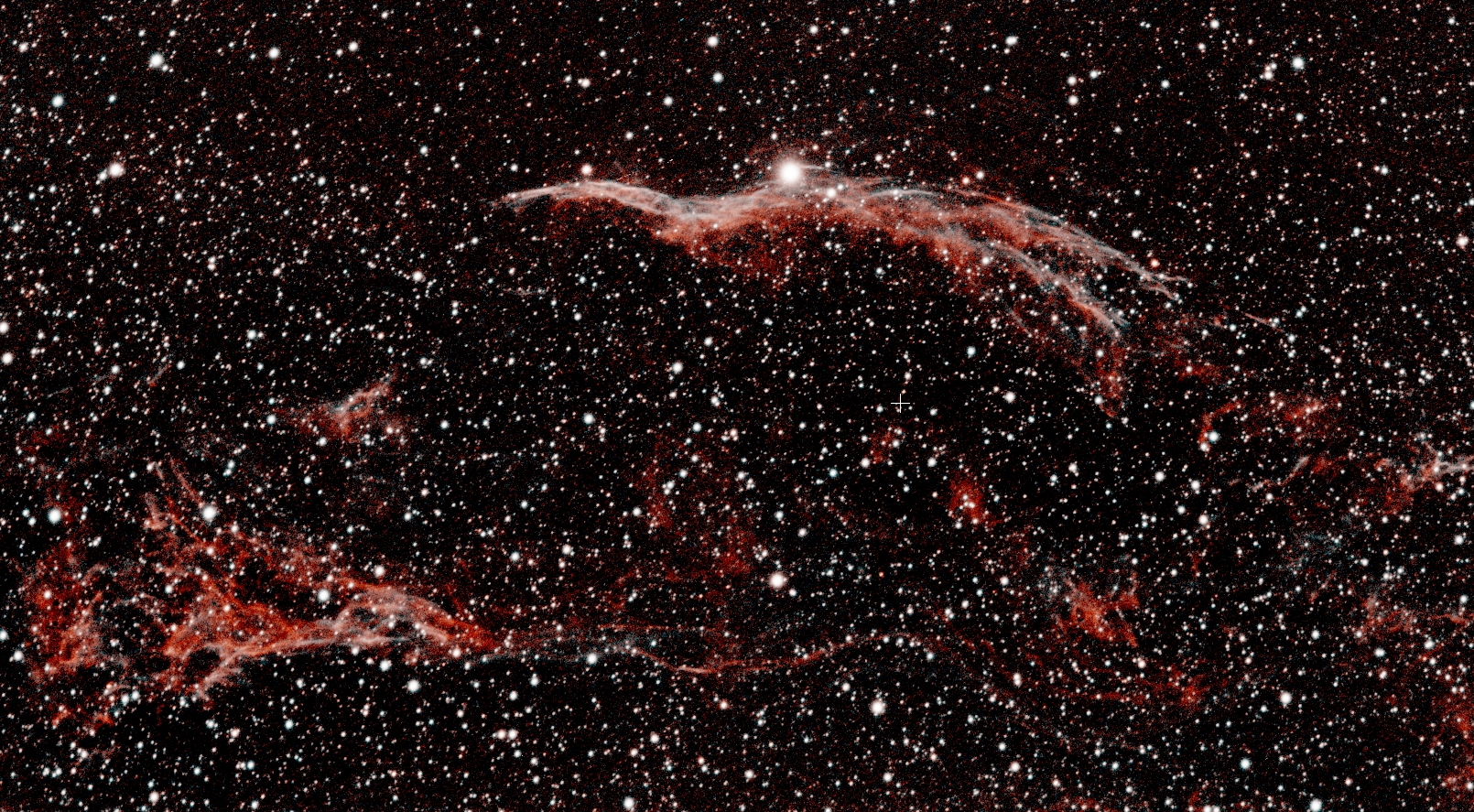Details
The Western Veil Nebula also known as the Filamentary Nebula is part of the larger Veil Nebula, a large complex cloud of glowing gas that are the remnants of the supernova explosion of a large star 10 to 20 thousand years ago. The nebula primarily, which is estimated to be about 24,000 light years from us, emits light produced by Hydrogen(red/orange) and ionized Oxygen (blue). The whole nebula has an apparent dimension of 3 degrees. For comparison, the full moon is only about half of a degree.
To capture images of the nebula, Cameron used a low power telescope to give a wide field of view. He used a dual narrowband filter that only transmits the specific colors of light produced by the nebula. Because this filter blocks most light from entering the camera, he was able to take 300 second exposures without over exposing the surrounding sky or stars. A smaller guide-telescope was used to make small corrections to the mount every few seconds to ensure sharp images, with everything being controlled with the Ekos astrophotography software suite.
Cameron first processed the images using only the SiriL software, but also did some more final processing using a program called PixInsight. Both versions are shown above. The Western Veil is in the upper part of the images. To the lower left is another section of the Veil, sometimes called 'Pickering's Triangle'.


